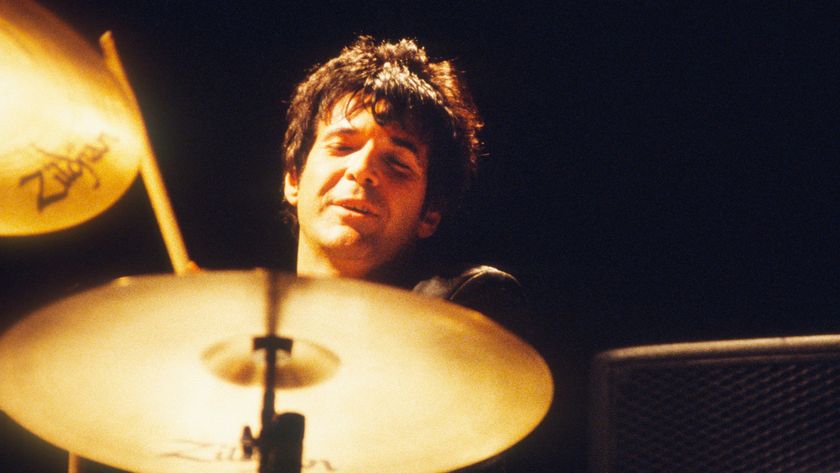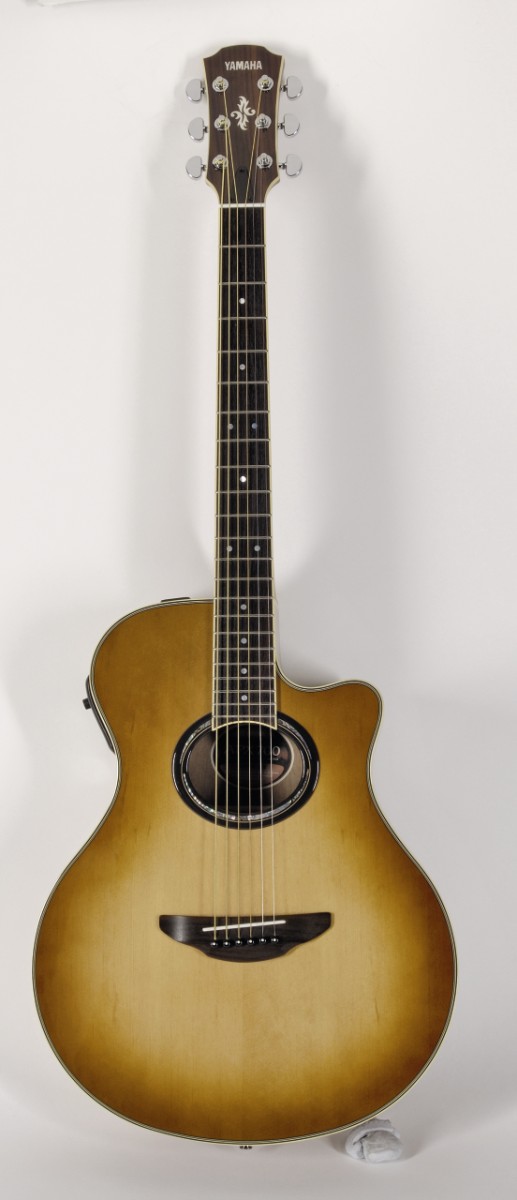MusicRadar Verdict
What makes Yamaha's answer so convincing and praiseworthy is that not only are these ART systems great quality and simple to use, but that the company has made them immediately affordable.
Pros
- +
Pretty much everything. The natural smoothness of ART sounds compared to the old under-saddle piezo arrangement.
Cons
- -
Slight onboard tuner dither but good accuracy nonetheless.
MusicRadar's got your back
First, and bucking manufacturers' natural tendency to keep adding models, the new generation of each series is more concise than ever.
The APX intros, replacing the entire previous line-up, number only three models, while the new CPX roster is just two strong (albeit supplemented by continuing production of the higher-end Jap-made CPX15 and its cosmetic variants).
Aside from the introduction of a lower-cost, conventional piezo-loaded APX500, the main focus of attention is on the new powering system for the other new guitars - the APX700 and 900, and CPX700 and 900.
Dubbed ART (Acoustic Resonance Transducer) and apparently three years in development, Yamaha's exclusive system is based around piezo crystal technology, but instead of a normal under-saddle strip pickup, it's incorporated into a multilayer contact sensor that's both body and string sensing.
The multilayer aspect, involving a sandwich of rubberised and metallic layers, is designed to achieve the optimum balance between a natural, dynamic, low-distortion sound and suf?cient damping to stiife feedback.
ART comes in two forms. On the APX and CPX700, it's a single-unit dual sensor mounted just forward of the underside of the bridge and linked to a one-way, three-band, mid-sweepable preamp.
On the 900 models, this pair of sensors is augmented by two further single ones, either side of the rear of the bridge and specifically tuned for high- and low-frequency response respectively.
The companion preamp is a three-way affair, allowing individual gain control of these auxiliary sensors, plus there's a master arrangement of volume and three-band EQ. Both the new preamps include an onboard tuner.
According to Yamaha, one of the crucial facets of the systems' testing was establishing the best placement to hit the 'sweet spots'. Consequently, this part of the build process is aided by a simple jig to ensure that the sensors are located under the tops in exactly the same positions every time.
Overview
Outwardly, and taken as a broad viewing, there's little to differentiate the new APXs from the previous ones, but closer inspection reveals cosmetic upgrades when weighed against each model's closest comparable predecessor.
The APX700 is the same price as the old APX5 yet the specification is noticeably more upmarket. The spruce/nato construction now includes a solid top, the raised soundhole ring is inlaid with abalone, and the cream binding encompasses not only the body but also the fingerboard and the rosewood-overlaid headstock.
The Yamaha logo and leafy motif here are inlaid mother-of-pearl, rather than transfers. The collective result is like an amalgam of the APX5 and the APX7.
The company is stressing the thinness of the polyurethane lacquer on all the APX/CPX debuts, aimed at helping to maximise acoustic resonance.
It reckons that after final buffing, the finish averages just a tenth of a millimetre thick, comparable to what premier-league boutique luthiers claim to achieve. Like most Yamaha acoustics, the APX700 has a gloss body and satin neck, though the APX900 is all gloss. This difference applies to the CPX700 and 900 too.
Save for 22 frets on the APXs and 20 on the CPXs, Yamaha has clearly adopted a one-size-fits-all policy for the 648mm (25.5-inch) scale necks on the debuts.
Except for negligible variances in higher-position depths, they're identical to one another in all dimensional respects.
Which, as described for the APX700, means a 43mm span at the nut and 53.5mm at the octave; a shallowish, evenly rounded profile; a modest 356mm (14-inch) radius across the rosewood board; and, at the bridge, Yamaha's usual slightly tighter than mainstream string spacing of 53mm.
It's a very comfortable general-purpose player, with a slickness of touch enhanced not only by the baby-smooth satin finish but also by the highly polished, well-dressed fingerboard and fretting.
The APX700's System 56 preamp (also used on the CPX700) is similar in layout to earlier Yamaha mid-sweepable three-band units, but room has been made to shoehorn in an auto-chromatic tuner that's operable whether or not the guitar is plugged in.
Reference relies on a single LCD display, using a familiar array of arrows to indicate tuning status. It's apt to dither slightly when very close to pitch, but is ultimately easy and accurate to use.
It's worth noting that unlike certain tuners from other manufacturers (Ovation, for example) it can't be recalibrated for off-concert pitches. The tuner is activated by a button, and to turn it off, it needs to be held down until the battery LED flashes - a quick prod won't do.
Sounds
APXs were conceived as performance electros, with compact handling taking precedence over acoustic prowess. However, every major revamp over the last 20 years has seen improvements in this latter regard, and the APX700 is certainly no slouch for its size.
Its brightish delivery is buoyant and sustainful, and while the amount of low end is understandably modest, there's a sufficient element of warmth to avoid accusations of undue tonal thinness, while the sound is well balanced within itself.
This reviewer has played enough APXs over the years to know that, fired up, the APX700's new ART sensor system is contributing something both different and superior to the old under-saddle-loaded instruments.
Two things are most apparent. First, it used to be all too easy to cook the treble to a nastily brash, searing degree. Now when boosted, what we hear is a pleasantly sparkling top end.
Secondly, the midrange is more smoothly tempered and you no longer have to notch that down as a starting point.
Add in the versatility of the preamp's ultra wide-range mid sweep (80Hz-10kHz) and a warmly responsive bass band, and you have an instrument that displays enviable powered quality and poise for its asking price.
The more extensive tonal and dynamic abilities of the three-way ART system may prompt some people to regard the one-way APX700 and CPX700 as poor, comparatively inadequate relations. That would be wholly unfair, though. T
hese cheaper models not only represent a significant performance and quality step forward from Yamaha's under-saddle powering (which wasn't too shabby anyway), but the pricing difference against the 900s allows potential buyers to make a clear-cut decision.
It really is a case of 'you pays your money and takes your choice', and whichever way you jump, the level of value is totally enticing.
Yamaha's simplicity of pricing is to be applauded too: there are no premiums on the CPXs merely because they're larger instruments - there's just a common price within each model level, so the final part of your decision-making is simply whether you want a big body or a small one.
The quest for developing superior-sounding alternatives to under-saddle strip transducers was arguably kick-started a few years back by Taylor with its Expression System, and competition from other manufacturers is emerging.

“I didn’t think people would mind that I didn’t play it, but it became a problem. I got myself into a pickle”: Clairo says it was Charli XCX who convinced her to perform one of her most popular songs again

“It pretty much half killed us. Whether the band would continue was very much in the balance”: The Radiohead album that almost broke up the band, turned the music industry on its head - and became their best record

"I've analyzed hundreds of players over the years. They're all a part of what I do": Clem Burke's 10 essential drum albums










